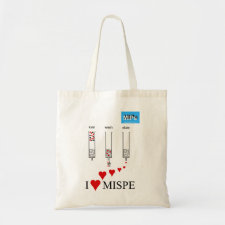Authors: Pisarev OA, Polyakova IV
Article Title: Molecularly imprinted polymers based on methacrylic acid and ethyleneglycol dimethacrylate for l-lysine recognition.
Publication date: 2018
Journal: Reactive and Functional Polymers
DOI: 10.1016/j.reactfunctpolym.2018.06.002
Alternative URL: http://www.sciencedirect.com/science/article/pii/S1381514818300683
Abstract: The enantiomers separation is a subject of a fundamental importance in various application fields such a pharmaceutical industry, biomedicine, food, etc. New molecularly imprinted sorbents based on methacrylic acid (MMA) as a functional monomer and ethyleneglycol dimethacrylate (EGDMA) as a crosslinking agent have been synthesized, characterized and evaluated as a selective materials for l-lysine recognition. The conditions for synthesis of optimal control non-imprinted polymer (NIP) have been found. The greatest sorption capacity and the best structural stability have been occurred on polymer containing 88 mol% MMA and 12 mol% EGDMA, which synthesized in medium of 45% water solution of isopropyl alcohol at 20% comonomers concentration. Samples of polymers molecularly imprinted with 3, 6, 9 and 12 mol% of l-lysine template (lysMIPs) were synthesized. The lysMIP-9 and lysMIP-12 possessed low structural stability therefore it was decided that these sorbents are unsuitable for use in preparative sorption processes and they were not studied further. Batch adsorption experiments were carried out as a function of pH (6.6, 8.3 and 11.0), ionic strength (0.1 M, 0.2 M and 0.4 M) and temperature (293 K, 310 K). Examination of distribution coefficients and thermodynamic functions of the l-lysine sorption on the NIP and lysMIPs indicated conversion from ion-ion interactions with non-imprinted sorbents to mainly nonionic interactions with molecularly imprinted sorbents. The sorption isotherms of l-lysine were analyzed using the generalized Langmuir and Freundlich equations. In the case of the lysMIP containing a greater number of imprint sites (lysMIP-6), the sorption of l-lysine occurred on the energetically homogeneous binding centers, forming one monolayer, while the nonspecific sorption of l-lysine on the NIP occurred with energetically heterogeneous binding of the sorbate. The best kinetic sorption properties were obtained on lysMIP-6. This could be due to the distribution of the sorbate in imprint sites, which were easily accessible in a narrow surface layer of sorbent particles. The obtained equilibrium and kinetic sorption data allowed developing an effective method of separation of D and L forms of lysine on molecularly imprinted sorbent lysMIP-6
Author keywords: L-Lysine, Molecularly imprinted polymers, enantiomers separation, Equilibrium, Kinetics and dynamics of sorption



Join the Society for Molecular Imprinting

New items RSS feed
Sign-up for e-mail updates:
Choose between receiving an occasional newsletter or more frequent e-mail alerts.
Click here to go to the sign-up page.
Is your name elemental or peptidic? Enter your name and find out by clicking either of the buttons below!
Other products you may like:
 MIPdatabase
MIPdatabase









